In an era of constant digital distractions, how do we compete long enough to convert? The trick is to make your content as customer focused as possible.
Content marketing is a constant struggle for any brand. It is probably the most important element to their overall promotional strategy and the greatest tool at their disposal.
It can also be the most fickle, as it relies heavily on keeping and maintaining the interest of the ones consuming it.
You need to focus on your customer! This allows what you produce to immediately connect with your audience and provides something of value to them. Not only does this give you benefits in the moment by offering the information they want/need, it also gives you long-term benefits by establishing the authority of your brand.
Here are three tips and tools to help you create a customer-focused content marketing strategy.
1. Be clear on content objectives
Try to figure out just what the aims of your content will be. If there are no objectives to work from, the results will end up aimless and meandering, not really benefiting anyone, even if it manages to drive a bit of traffic. It is like throwing spaghetti at a wall… sure, some of it is going to stick, but most of it is going to end up on the floor.
So, what is it you want to achieve with each piece of content? How can you create a cohesive strategy that matches each of those objectives? How will you measure success towards those goals?
First things first: Do some keyword research and see what it is your customers want to know about. What are they struggling with? What is upsetting/confusing/angering/interesting them? How can you make their life easier through your content?
Just looking at your keyword lists won’t tell you much though. You need to work on organizing your keywords. This will help you lay out a clear content strategy.
I use spreadsheets to organize and label my keywords so that it becomes clear how to better serve the people behind using them to search.
Break keywords into groups by relevancy
This will allow you to better understand your niche and target one page to the whole group of keywords, versus each of them individually.
Keyword clustering is an effective tactic to use here. Serpstat does it pretty well by determining how many URLs overlap for different search queries and thus identifying closely related phrases. (Read more about the tactic in our dedicated guide to keyword clustering).
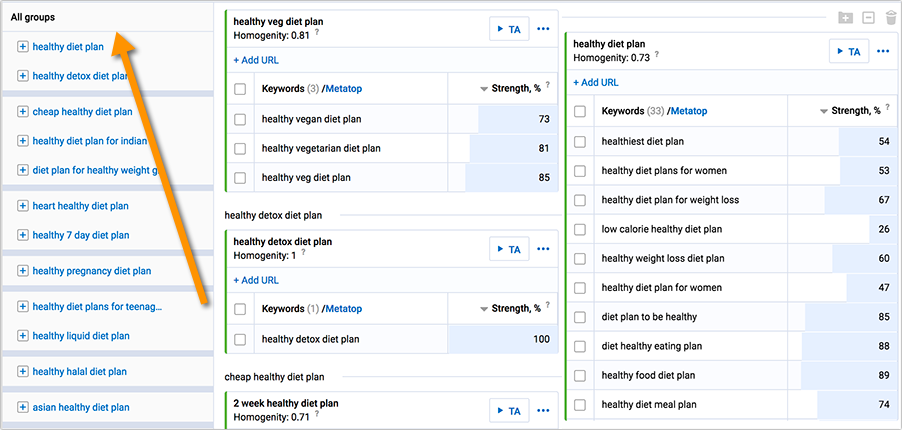
From there, determine intent behind each group
Keyword intent reflects the users’ aim behind searching. It helps you to better serve your audience needs and thus improve your conversion rate. I usually label my keyword groups with four types of user intent:
- Commercial: No need trying to serve them content here: These people are ready to buy!
- Transitional: These people are likely to still be in the research phase but they may be willing to buy after you give them some actionable content. Product reviews and gift ideas are perfect content assets for this group
- Navigational: Those keywords that content the brand name. Firstly, we want to make sure our brand ranks #1 for these. Secondly, we want to use these keywords to better understand possible problems with the site or the product
- Informational: These people are searching for information only. The perfect CTA for this content is an invite to subscribe.
Label seasonal content
Last but not least, you want to make sure you publish that content when you audience needs it most. If it looks like certain content is likely to solve a seasonal problem or catch seasonal interest peak – or more often than not, both – keep it scheduled for that season.

2. Go straight to the source
You need to know what is important to the people who you are targeting. Knowing your audience is always going to be the leading step before you do anything else. Yet, an astonishing number of brands fail in this regard and create not what customers really want or need, but what they assume they want or need. The difference between those two things is not so much as gap as it is a cavern.
My personal preference for doing this is through customer feedback surveys. You have to be careful using these helpful little info gathering tools because if they are too long, hard to complete or just biased it is going to annoy the customer.
I use Wyzzer to put together 60 second surveys of up to 25 questions that are fast and easy to click. They even present it a little game, so the surveys are more engaging.
It’s a nice little way to achieve several goals at a time:
- Let your customers tell you more about themselves (What do they like? What are their life choices? What are their hobbies?)
- Entertain your readers and engage more of them by gamifying the surveying process
- Diversify your content by adding something new.
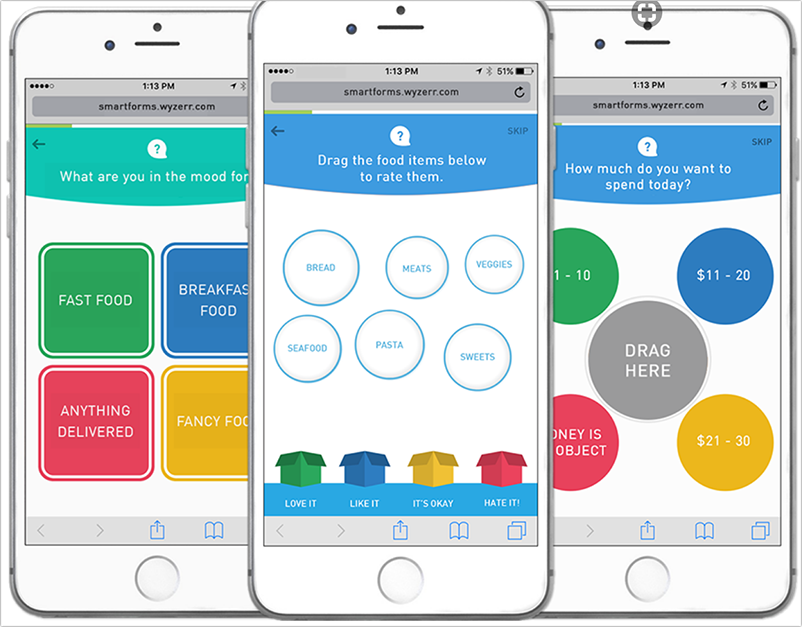
There are also several polling plugins that integrate into your WordPress blog easily. You can use these to quickly poll your customers on important matters, learn if they need a follow-up to a certain article or ask them which direction to take with your upcoming content series.
3. Map out the customer journey
Every customer goes through a journey from the moment they learn of your brand. It starts with the first lead, making them aware of your product. It ends not with the sale (as some believe), but with the experience afterward and how they feel about your brand. By the time they reach that stage they have completed the journey that you are responsible for guiding them through.
Having a clearly mapped journey with stages is one of the best things you can do. You can create content for every step, from the first landing on your website to the social reviews at the very end.
Research brand-focused keywords
I have already mentioned navigational queries and how they also should be used to better understand where your brand is lacking. Looking at how customers are searching for your brand may be eye opening?
Do they have problem finding how to log in? To they think your product is too expensive? Are they looking for alternative ways to get in touch with you?
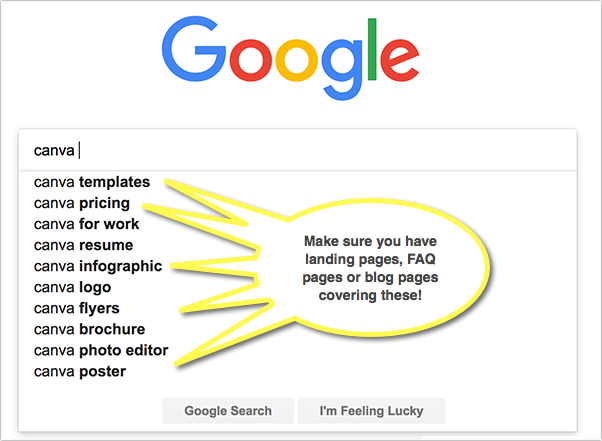
All of these signal of one common problem: Those people must have already visited your site but they are now searching Google instead of interacting with you directly.
Monitor social media reputation
You are likely to already be monitoring where your brand is being discussed on social media and then acting upon those mentions.
But this is usually viewed in the perspective of social media engagement and customer service. You need to add another objective to this task: Analyzing your site or product issues and solving them using all kinds of methods, including content.
I use Cyfe for monitoring social media mentions and scheduling social media updates. It’s very affordable and you can use multiple users to see selected dashboards, so you can delegate tasks quite efficiently with it:
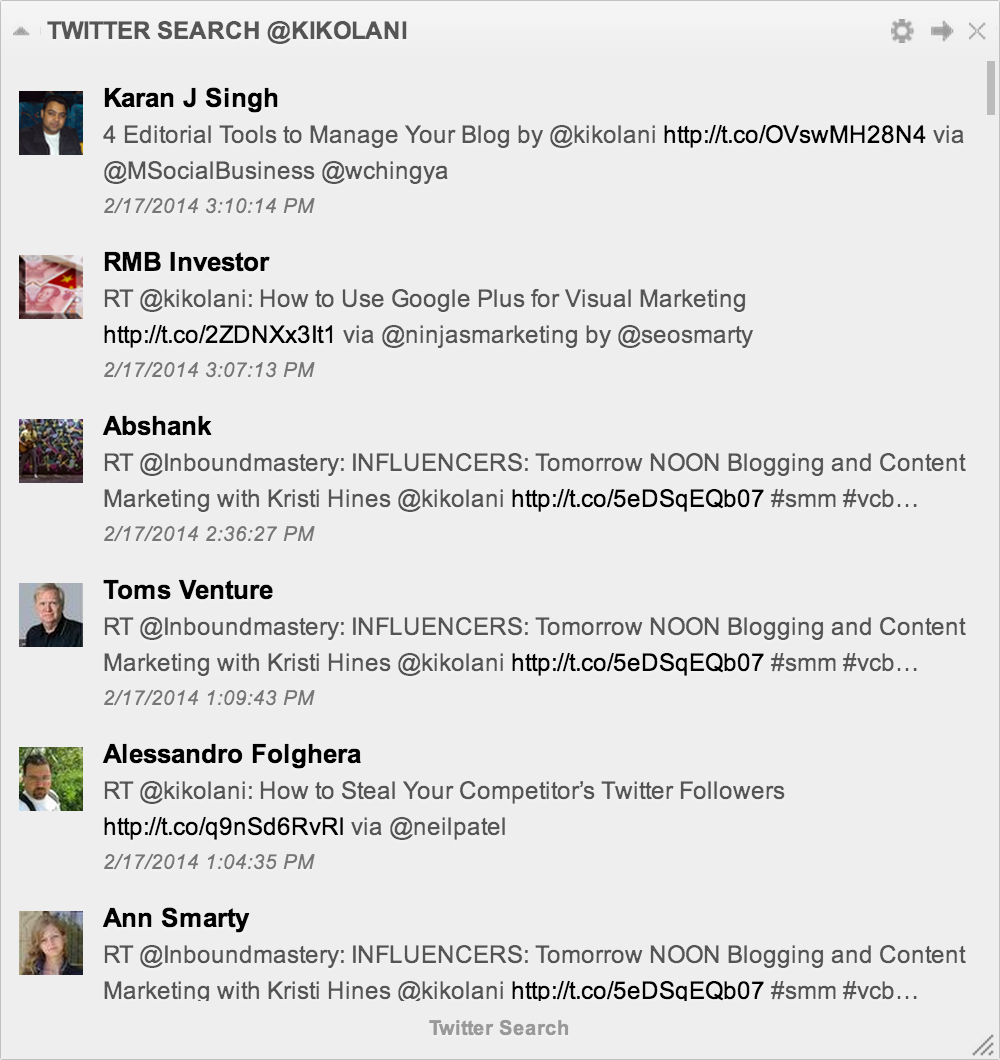
Record your sales/customer teams interactions with clients
If you aren’t yet using a customer relationships management platform, get one now. I use Salesmate and it’s eye-opening: You can see exactly which struggles each customer had while using your site and buying your product.
Encourage your team to record as much of the customer journey as they can. Sync your social media monitoring software with Salesmate to record more of the questions and interactions with each customer.
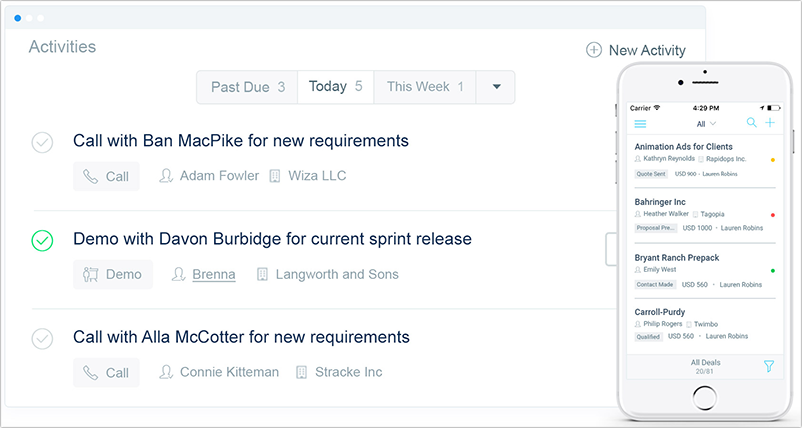
Add experience surveys in your “Thank you for the order” emails
Consider integrating your customer research process with your sales process by implementing surveys as part of your order status emails. This will give you a good impression as to what can be done to make the process smoother and what content needs to created to cover other needs.
You customers are your concern, so show them!
The most important person for any brand is the customer. Unfortunately our content doesn’t always reflect that.
Making a content marketing plan more customer-centric is one of the best ways we can improve our results and help turn those leads into conversions.
from Content – Search Engine Watch http://ift.tt/2n1YJuz
via SEW ref=da&site=blogger">IFTTT

No hay comentarios.:
Publicar un comentario